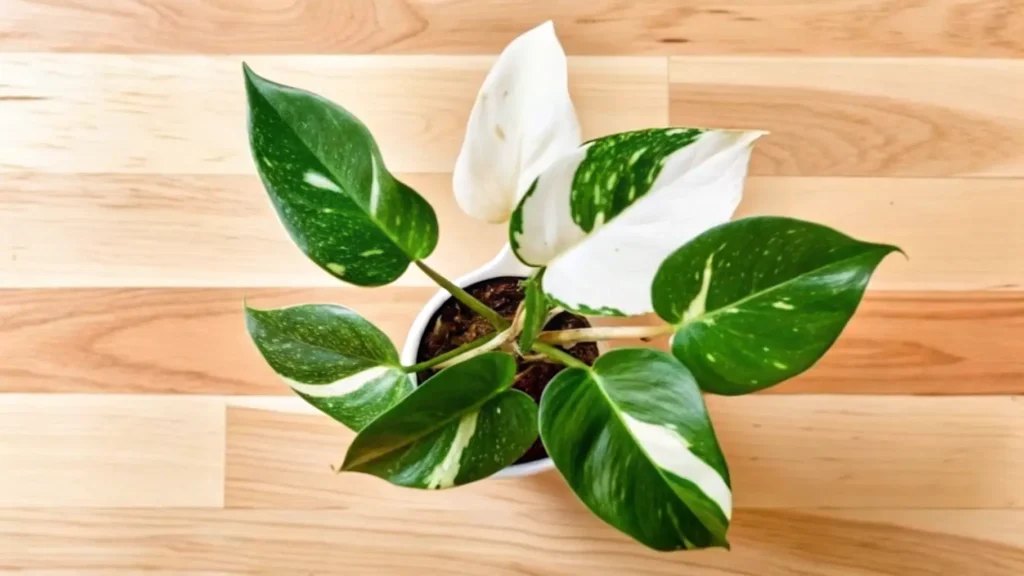
I love how my white princess philodendron brightens any indoor space with its dazzling white variegation. It’s a rare tropical aroid that’s surprisingly low-maintenance, and I enjoy seeing fresh leaves all year. If you’re new to caring for unique houseplants, this captivating beauty could be your perfect choice. Let’s explore the best ways to keep it thriving, starting right now!
Table of Contents
What Is a White Princess Philodendron?
Understanding the Philodendron White Princess
The white princess philodendron is a tropical aroid loved for its fresh-looking leaves that feature splashes of white. Unlike many plain indoor greens, it sports those unique variegation patterns that draw attention from all kinds of houseplant enthusiasts.
- It’s considered a rare houseplant, so finding one can be thrilling.
- Some folks chase these gorgeous leaves online, sharing pics on social media.
- You’ll find it manageable if you stick to basic Philodendron care tips.
I first fell in love with its glossy foliage while browsing an online nursery. It reminded me of a gentle snowstorm swirling through each leaf. Honestly, that “winter wonder” look makes it a crowd-pleaser!
The Rise in Popularity of This Rare Indoor Plant
Popularity skyrocketed as people realized how photogenic it is. If you see a feed featuring bright, shimmery leaves, there’s a good chance it’s the white princess philodendron. This plant is easygoing, so it’s appealing for both beginners and experienced collectors who appreciate a bit of flair in their collections.
Distinguishing the White Princess from Other Variegated Philodendrons
White Princess Philodendron vs. Pink Princess Philodendron
Although the Pink Princess is also beloved, it has pink tones rather than white.
- White princess philodendron is all about the stark white marbling (like swirling cream on top of coffee).
- The Pink Princess, by contrast, offers bubblegum patches.
- Both enjoy bright, indirect light, but the visual effect is wildly different.
I’ve grown both, and I have to say, they each have their own vibe. The Pink Princess is playful, while the White Princess is more refined. Sometimes, leaves on the White Princess might feature half-white sections, which catch the eye instantly.
Spotting Unique Variegation Patterns
Variegation in the White Princess can be:
- Large blocks of white on the leaves, or
- Subtle white speckling sprinkled all over.
This variation keeps it exciting. However, too much white can lead to leaf discoloration if the leaf can’t produce enough energy. That’s why proper lighting is so important.
Ideal Growing Conditions for White Princess Philodendrons
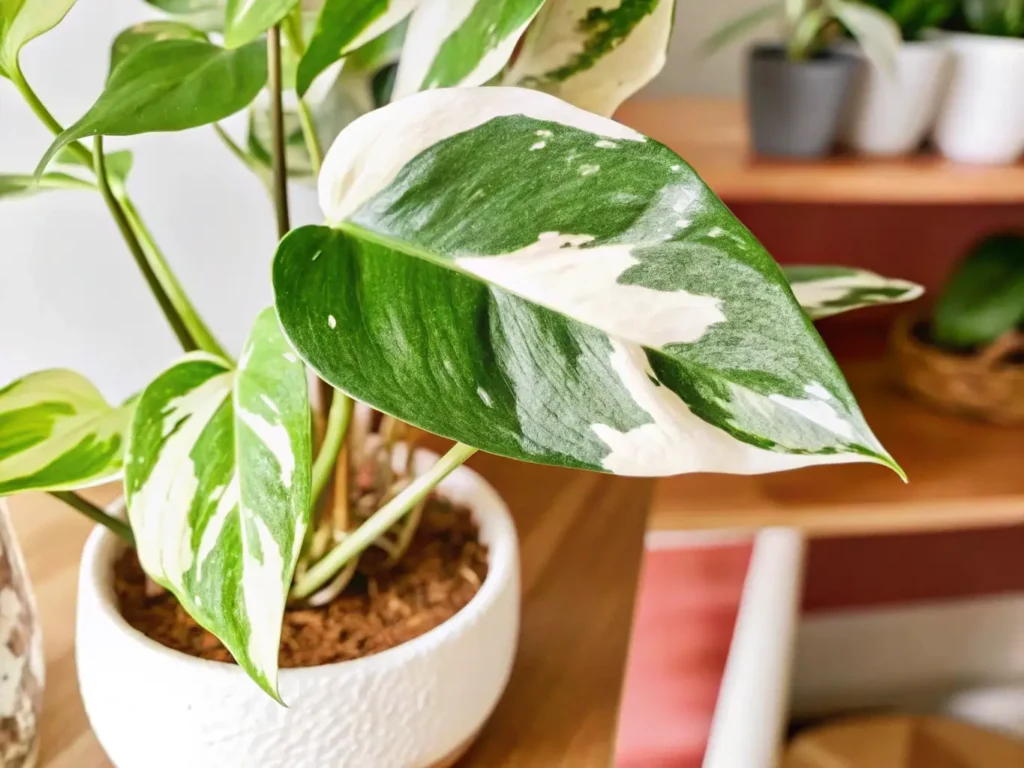
Light Requirements for Optimal Variegation
Sunlight plays a major role in maintaining bold variegation.
- Position the plant where it gets at least a few hours of bright, indirect light each day.
- Avoid direct sunlight that could scorch the tender leaves.
- If the color fades, move it closer to a window, especially in winter.
I typically rotate my plant so all sides get even exposure. This helps the leaves grow uniformly. However, don’t park it in a dim corner or you risk losing that stunning white contrast. In simpler terms, keep it bright but not baking in the sun.
Temperature and Humidity Needs
The white princess philodendron thrives in living rooms if the temperature stays around 65–80°F. (I keep mine in a cozy spot, away from chilly drafts.) Because it’s a tropical aroid, it loves consistent humidity levels.
- Using humidity trays or grouping your plants can help.
- A small humidifier is also a solid option.
- If leaves curl or droop, your air might be too dry.
I learned that a high-humidity environment encourages healthy growth. To confirm this, I once checked daily with a cheap humidity meter. Sure enough, whenever the humidity dipped below 40%, my plant showed stress by folding its leaves. No thanks!
Soil and Potting Mix Essentials
Choosing the Right Aroid Mix
The right medium is key for root rot prevention.
- I go for an aerated soil mix made with orchid bark, perlite, and a standard potting base.
- This allows moisture to drain while retaining some dampness.
I treat it somewhat like my Snake Plant—both appreciate good drainage to avoid soggy roots. If the soil is overly dense, roots suffocate. That’s a big no-no. I’ve found that mixing extra perlite can make a world of difference in balancing air and moisture.
Common Soil Mistakes to Avoid
Many people cram their white princess philodendron into a fancy pot without drainage holes.
- That quickly traps water at the bottom.
- Over time, roots can turn mushy.
- Stay away from heavy soils or water-retaining gel crystals.
Keep the blend airy, and your plant will reward you with lively new leaves. I’ve mistakenly used gardening soil with zero perlite before—it caused a real headache. Now I never skip the chunky stuff.
Watering Best Practices
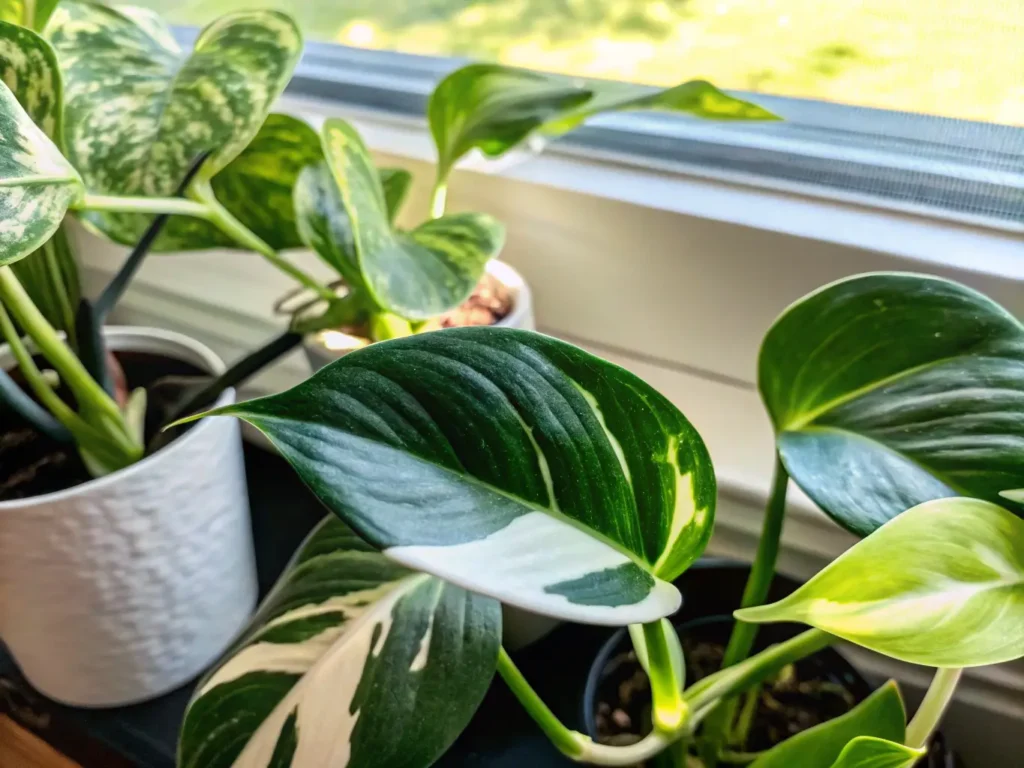
Frequency and Signs of Underwatering/Overwatering
I often water mine once a week or so, but that’s not a strict rule. Instead, I poke a finger into the top inch of soil.
- If it feels dry, I water.
- If it’s still moist, I wait a day or two.
- Yellowed leaves can reveal overwatering.
- Crispy leaf edges might hint at underwatering.
When I first got this plant, I watered by schedule rather than by feel. Big mistake! Overwatering led to soggy soil and some droopy leaves. Lesson learned.
Drainage Tips for Healthy Root Systems
A pot with holes is your friend. Also, tip the pot if excess water accumulates in the saucer. Whenever I notice draining issues, I add more perlite to my mix. This approach is similar to what I do with my Black Dragon Plant—both appreciate that consistent oxygen around their root systems.
Fertilizing Your White Princess Philodendron
Organic vs. Synthetic Plant Foods
You don’t need hardcore fertilizers to keep this plant healthy. I use a mild, balanced formula that’s often labeled 10-10-10 or 20-20-20.
- Organic compost can work well, though it’s slower.
- A gentle synthetic brand delivers quick nutrients.
- According to official USDA guidelines, slow and steady feeding helps maintain stable growth.
While my personal choice varies based on seasons, I generally pick a product that’s easy on indoor plants. Overfeeding, after all, can cause leaf burn or stunted growth. Keep it moderate and watch for subtle changes in leaf color.
Seasonal Feeding Schedule
I feed mine monthly during spring and summer.
- In fall, I often cut back to every six weeks.
- In winter, maybe once every two months.
- If leaves appear washed-out, I might increase feeding slightly.
- If you see crunchy edges, reduce it.
Balance is everything. Give your plant enough fuel, but don’t flood it with extra.
Pruning and Propagation Techniques
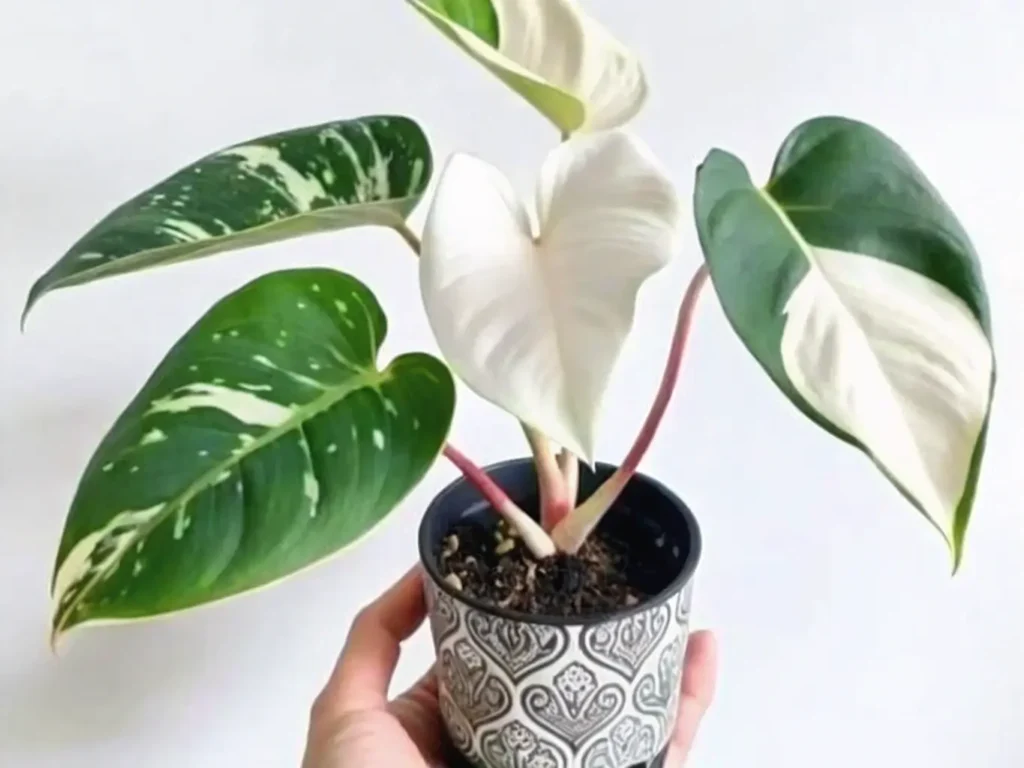
When and How to Prune for New Growth
Pruning helps direct energy into fresh, healthy leaves.
- I like to prune in spring when the plant starts gearing up for new foliage.
- Snipping off old or yellow leaves is like clearing away clutter.
- Use clean scissors to avoid spreading disease.
- Don’t be shy about removing leaves that are excessively white, because they might not produce enough energy.
I’ve found that getting rid of dead or damaged bits can “reset” the plant so it can focus on pumping out vibrant leaves. Plus, it keeps everything looking tidier.
Step-by-Step Guide to Propagation
Propagation is a fun way to get more from your white princess philodendron. I take stem cuttings that include at least one node.
- Use sterile pruning shears to cut below a node.
- Place the cutting in water or a propagation station.
- Refresh the water weekly to prevent slimy buildup.
- Once roots form (about an inch long), pot it into a small container with an aerated soil mix.
- Keep the new cutting in a high-humidity environment for faster adaptation.
It’s honestly a blast to watch roots develop. Gifting a baby plant to a friend is an amazing feeling. Your original plant also gets to branch out and become bushier in the process.
Common Pests and Diseases
Recognizing Mealybugs, Spider Mites, and More
Unwanted hitchhikers love houseplants, and the white princess philodendron is no exception.
- Mealybug infestation shows up like tiny cotton bits.
- Spider mites often leave webbing under leaves.
- Leaf spots might indicate fungal or bacterial issues.
When you see drooping leaves or sticky residue, investigate closely. I’ve accidentally let a minor spider mite attack spread before noticing the telltale webs. Now, I check weekly just in case.
Preventive Measures and Treatments
Consistency is key.
- Wipe leaves regularly with a damp cloth.
- Quarantine a sick plant from others until it recovers.
- If needed, go for insecticidal soap or neem oil to handle pests.
- Improve airflow around your plants to discourage fungus.
A healthy environment goes a long way. Routine checks reduce the risk of a full-blown attack. I treat any sign of pests right away, so they don’t have a chance to spread.
Potting, Repotting & Supporting Your Philodendron
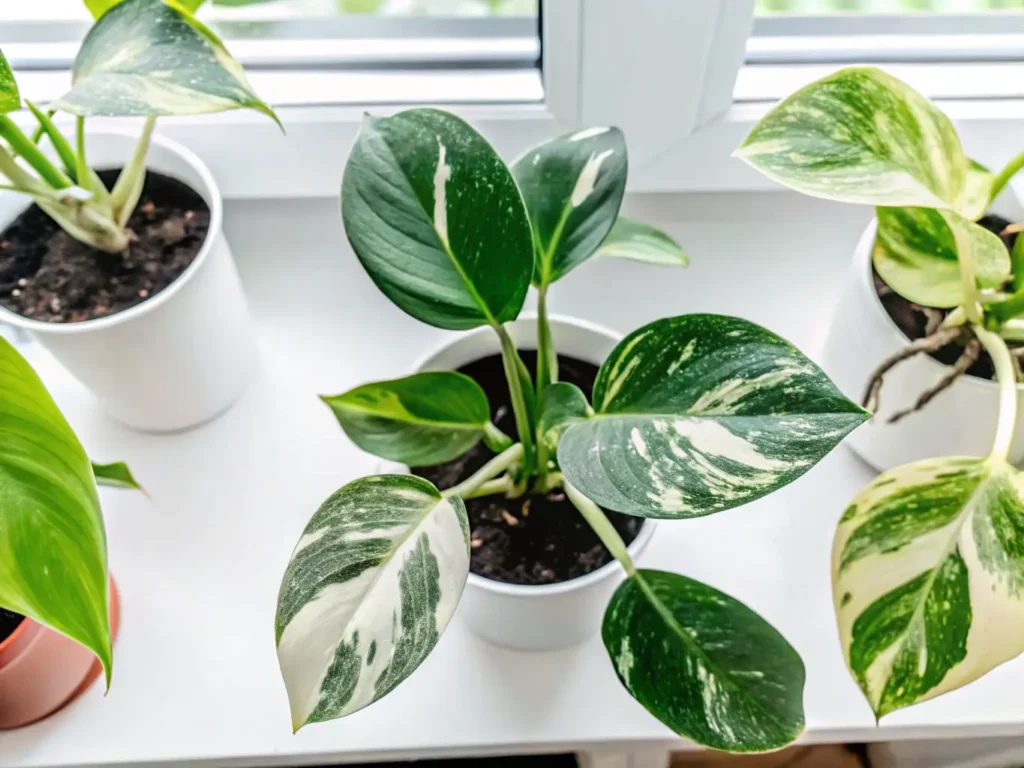
Signs Your Plant Needs a Bigger Home
Every year or two, consider upgrading the pot.
- If roots peek out of the drainage holes, it might be time.
- If the soil dries out too quickly, you might need more space for root growth.
- When repotting, inspect the roots for any black or mushy sections and trim them away.
I typically enjoy seeing fresh white roots snaking around. They’re a sign of a happy, thriving plant that’s ready for a new container. A bigger pot, within reason, can keep the plant from toppling.
Staking and Trellising for Climbing Growth
Since it’s an indoor climbing plant, it appreciates some kind of vertical support.
- A simple moss pole or sturdy stake can help.
- Tying stems gently encourages them to climb upward.
- This often results in bigger, more dramatic leaves.
I’ve noticed that once the aerial roots latch onto the stake, the leaves become thicker and healthier. It’s fun to watch it “hug” the pole as it develops.
Styling and Showcasing White Princess Philodendrons
Decorative Ideas for Indoor Displays
Because the white princess philodendron is already eye-catching, I prefer minimal fuss around it.
- Place it on a shelf with warm-toned décor.
- Float it on a plant stand near a window with bright curtains.
- Group it with contrasting green foliage to highlight the white variegation.
I change up its location from time to time, and I often snap pictures to share with friends. It’s almost like having a living piece of art!
Complementary Houseplants and Arrangements
Pair it with plants that thrive in similar Philodendron care tips:
- A hearty Monstera or a bold rubber plant can create a dramatic grouping.
- Smaller ferns balance out the bigger leaves.
- Similar watering schedules make your life easier.
This matching approach keeps everything on the same routine, so there’s less confusion. Plus, you get that lush, layered vibe that turns a plain corner into a mini jungle.
FAQs
How Fast Does a White Princess Philodendron Grow?
Growth varies, but you could see new leaves every few weeks in spring and summer. Consistent watering, enough warmth, and a fertilizer schedule can boost this cadence slightly. Still, don’t expect it to shoot up like bamboo or anything!
Why Are the Leaves Losing Their Variegation?
Light plays a big part in maintaining leaf color. If you notice more green than white, try moving it closer to brighter spots. Leaves that are mainly white can fade faster, so a balanced environment is your best bet. If a leaf has gone completely green, pruning it might prompt new variegated growth.
Can the White Princess Philodendron Be Grown Outdoors?
You can place yours outside if you live in a mild climate, but you should protect it from harsh sun rays or cold temps. Many people prefer to keep it indoors where the environment is stable.
Is the White Princess Philodendron Toxic to Pets?
Like other Philodendron cultivar types, it contains calcium oxalates that can cause irritation if pets chew on it. Keep it out of reach if your pets love nibbling on leaves.
What Is the Difference Between White Princess and White Knight Philodendrons?
The White Knight can show white variegation on thicker stems, whereas the white princess philodendron often leads with thinner stems and daintier leaf markings. Both are undeniably beautiful, so choosing might come down to personal taste.
Final Thoughts
I hope this deep dive—well, more like a friendly chat—helps you enjoy your white princess philodendron. It’s an indoor climbing plant that brings fresh, snowy highlights into any space. By following simple steps—like using an aerated soil mix, maintaining a high-humidity environment, and providing bright, indirect light—you can keep it healthy year-round. I love how each new leaf feels like a little present. And if you follow these tips, you’ll have a flourishing green (and white) buddy for seasons to come. Good luck, and happy growing!

3 thoughts on “White Princess Philodendron: The Ultimate Care Guide”
Comments are closed.